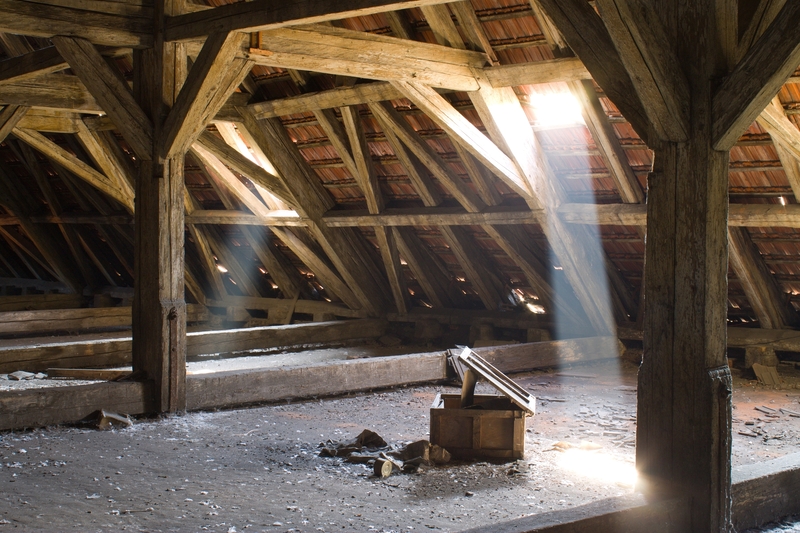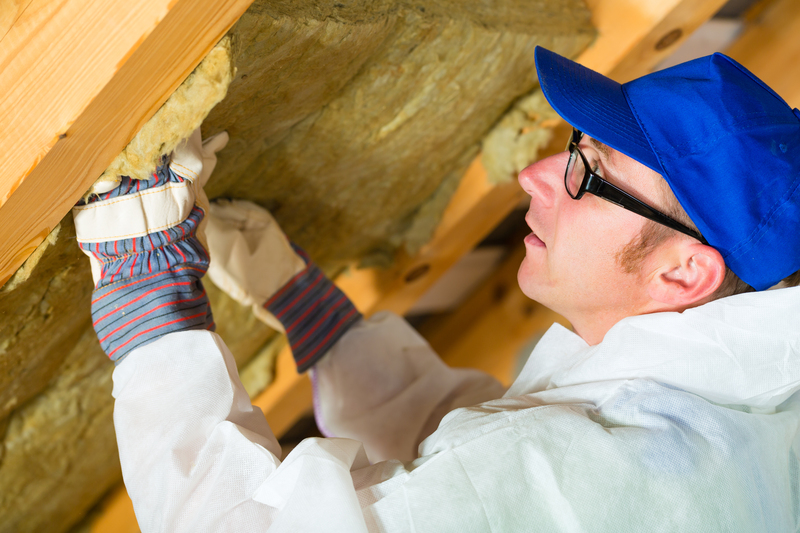Discover Clever Strategies for Maintaining a Burnt-free Stovetop Surface
Posted on 03/06/2025
Discover Clever Strategies for Maintaining a Burnt-free Stovetop Surface
If you have ever experienced the frustration of cleaning a burnt stovetop, you know how tough it can be to restore its shine. Not only do burnt residues create unsightly stains, but they can also damage your appliance and become a breeding ground for germs. Thankfully, with the right approach and some clever strategies, you can keep your stovetop surface spotless and free from stubborn burn marks. In this detailed guide, we explore effective methods for preventing burnt-on messes, expert maintenance tips, and best cleaning products suitable for every stovetop type.

Understanding Stovetop Surfaces: Gas, Electric, and Glass-Ceramic
Before adopting any burnt-free stovetop maintenance strategies, it's crucial to know what type of stovetop you have. Each material responds differently to cleaning and care:
- Gas stovetops: Feature removable burners and grates, typically constructed from metal or porcelain-enamel.
- Electric coil stovetops: Have visible heating coils that may collect spills directly beneath the elements.
- Glass-ceramic or induction stovetops: Boast a smooth, flat surface that is stylish but sensitive to scratches and discoloration.
Knowing your stovetop type informs which cleaning methods and preventative strategies work best, ensuring your effort pays off with a long-lasting, burnt-free finish.
Why Do Stovetops Get Burnt?
Burnt residues result from food spills, grease splatters, and sugary substances caramelizing at high heat. Failing to clean the surface immediately after cooking allows these messes to harden and stick. Regular exposure can dull the surface, making stains near impossible to remove. Preventing burnt build-up not only enhances kitchen hygiene, but also improves the lifespan and efficiency of your appliance.
Top Strategies for Keeping Your Stovetop Burnt-free
1. Clean As You Go
- Wipe Spills Immediately: The most effective strategy for a burn-free stovetop is prompt action. After each use, use a damp microfiber cloth or soft sponge to remove any food debris and liquid spills before they solidify.
- Keep Cleaning Supplies Handy: Store cleaning wipes or a spray bottle with mild detergent near your cooking area. Being able to swiftly access your tools makes staying consistent easier.
- Focus on High Traffic Areas: Pay special attention to areas around burners or heating elements, as they tend to accumulate the most residue.
2. Use the Right Cookware
- Choose Flat-bottomed Pots and Pans: These promote even heating and minimize hotspots that can cause overflow and burning.
- Avoid Oversized Utensils: Ensure that your cookware matches the burner size; overly large pots can spread spills to adjacent burners or heating surfaces.
- Utilize Lids When Cooking: Lids reduce splattering and help contain boiling liquids, further decreasing the risk of stubborn, burnt stains.
3. Prevention Is Key: Protective Accessories
- Stovetop Burner Covers: Use heat-resistant silicone or metal covers on gas and electric stoves. These are removable and dishwasher-safe, making clean-up easy.
- Splatter Screens: When frying or sauteing, employ splatter screens on pans. This simple tool can drastically reduce grease on your stovetop.
- Glass Stove Top Protectors: For glass-ceramic surfaces, custom-fit covers are available to shield against scratches and spills without interfering with the appliance's function.
4. Adopt a Weekly Deep Cleaning Routine
Even with regular wipe-downs, scheduling a deep clean keeps your stove truly burnt-free.
- Gas Stovetops: Remove the burner caps and grates. Soak them in hot, soapy water, then scrub with a non-abrasive brush. Wipe down the surface with a vinegar-water solution for grease removal.
- Electric Coils: Detach the coils and drip pans. Clean drip pans in soapy water and wipe the coils with a damp cloth (never submerge the coils). Clean the main surface while coils are removed.
- Glass-Ceramic: Sprinkle baking soda over stubborn stains, then cover with a damp towel for 15 minutes. Wipe clean with a non-abrasive sponge.
Tip: Dry all removable parts before reattaching to prevent rust or electrical issues.
5. Try Natural Cleaning Solutions
-
Baking Soda and Vinegar Paste:
- Mix equal parts of baking soda and water to create a thick paste.
- Apply to stains, allow to sit for 15 minutes, then spray with vinegar before wiping away the mess.
-
Lemon Juice:
- The acidic nature of lemon juice helps cut through grease while deodorizing your kitchen. Rub half a lemon across the surface, leave for five minutes, then wipe clean.
-
Salt Scrub for Tough Spots:
- Salt acts as a mild abrasive and can lift burnt food without scratching. Sprinkle over stains, let sit, then scrub gently with a damp cloth.
6. Invest in Quality Stove Cleaning Products
When natural solutions aren't enough, specialized cleaners designed for your specific stovetop surface can make all the difference:
- Glass Cooktop Cleaners: Non-abrasive creams or sprays for glass and ceramic stoves remove burnt residue without damaging the shine.
- Degreasers: Powerful for metal stovetops, commercial degreasers break down tough, greasy buildup safely.
- Non-Scratch Scrubbers: Invest in sponges or pads marked as 'non-scratch' to avoid surface damage.
How to Handle Existing Burnt Stains
If you're already battling a burnt or discolored stovetop, don't worry. Use these steps to restore your surface:
- Loosen Residue: Heat the affected burner slightly (do not get it hot - just warm enough to loosen stains), then turn it off and allow it to cool until just safe to touch.
- Apply a Paste: Spread your chosen cleaner (baking soda paste or a cream cleanser) onto the stain.
- Let It Sit: Give the cleaner enough time to break down the residue; 15-30 minutes is often best.
- Gently Scrub: Using a soft sponge or microfiber cloth, rub in circular motions. For truly stubborn spots, a plastic scraper can work on glass-ceramic surfaces.
- Rinse and Repeat: Rinse away any remaining residue and repeat the process if necessary.
Patience is your friend -- aggressive scrubbing may damage your stovetop's surface!
Expert Maintenance Tips for a Burnt-free Stovetop
- Don't Overfill Pots: Spills are a leading cause of burnt messes. Avoid filling pots and pans too high, especially with starchy foods prone to boiling over.
- Prioritize Ventilation: Use your hood vent to minimize grease settling on your stovetop surface. Proper airflow also helps prevent smells and sticky buildup.
- Check Gaskets and Seals: For glass-top stoves, inspect seals around the edges. Damaged seals can trap debris and make cleaning harder.
- Avoid Harsh Implements: Always use non-abrasive tools, especially for ceramic or induction cooktops. Metal scouring pads can cause permanent surface etching.
- Schedule Regular Maintenance: Like all appliances, regular check-ups by professionals (if recommended by your manufacturer) can catch underlying issues before they lead to burnt messes or decreased performance.
What Not to Do: Mistakes That Cause Burnt Surfaces
Preventing burnt stovetop disasters is often a matter of knowing what not to do:
- Never Use Abrasive Cleaners or Tools: These will scratch and dull your stove's finish, especially on glass or ceramic varieties.
- Avoid Procrastination: Allowing messes to linger transforms simple wipe-downs into major clean-ups. Act fast for best results!
- Don't Cook on a Dirty Surface: Residual grease catches and bakes on with each use, making stains tougher over time.
- Never Submerge Electric Elements: Water can damage the electrical contacts and create safety hazards.
Bonus: Stovetop Cleaning Hacks from the Pros
Looking for a shortcut? Check out these burnt-free stovetop hacks:
- Steam Cleaning: Place a damp, wrung-out towel over the cooled surface and turn the burner to low for a few minutes. The resulting steam lifts stuck-on residue.
- Dishwasher Tablet Scrub: Dampen a dishwasher tablet and gently rub it over especially tough, burnt-on stains. Wipe away the residue with a clean, damp cloth.
- Magic Erasers: Safe for many stovetop types, a melamine foam "magic eraser" can erase smaller marks and scuffs -- but always test first in an inconspicuous area.

Frequently Asked Questions
How often should I clean my stovetop?
For best results: Wipe after every use and deep clean weekly. Highly used kitchens may benefit from mid-week cleanings as well.
What's the best cleaner for glass stovetops?
Choose a dedicated ceramic or glass cooktop cleaner for maximum shine and safety. Avoid powders and abrasive pads, which can scratch and dull the surface.
Is it safe to use vinegar on a stovetop?
Yes, diluted white vinegar safely dissolves grease and cuts odors, and can safely be used on most types of stovetops. Always check your appliance's care guide before using acidic cleaners.
Can I use aluminum foil as a protector?
While aluminum foil can catch spills, especially on gas burners, prolonged use might obstruct gas flow or insulate electric burners, causing unsafe conditions. Choose professional burner protectors instead.
Conclusion: Enjoy a Spotless, Burnt-free Stovetop
Maintaining a pristine, burnt-free stovetop surface isn't as difficult as it may seem. By adopting smart habits -- like timely cleaning, using the right cookware, investing in quality covers, and utilizing natural or professional-grade cleaners -- you'll prevent burnt stains before they form. Treat your stove kindly and it will reward you with years of easy, efficient cooking and a kitchen you'll be proud to show off!
Ready to discover more clever kitchen cleaning secrets? Bookmark this comprehensive guide, and share it with fellow home chefs craving a cleaner, healthier, burnt-free stovetop surface.




